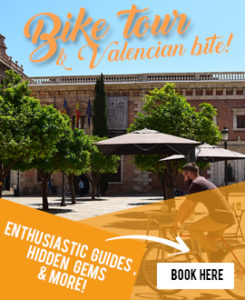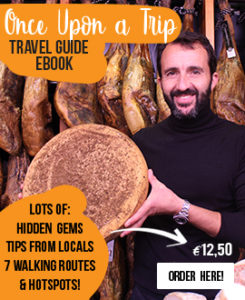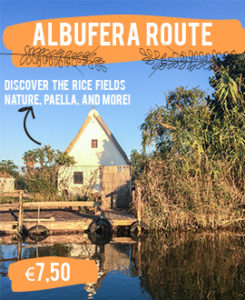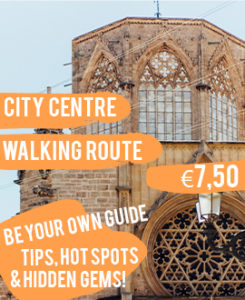Every year Valencia celebrates Día de la Comunidad Valenciana at 9th October. Are you in Valencia by that time and do you want to know what this day is about? On this page you will find more information about this holiday. We keep you updated on the events for the upcoming year.
What do they celebrate?
Every year Día de la Comunidad Valenciana is celebrated on the 9th of October. The city is founded in 1238. They celebrate the foundation of this city, it is about regional proud. The Christians, with Jaime I as their leader, conquered Valencia on 9 October 1238 after the Arabs had ruled the city for five centuries.
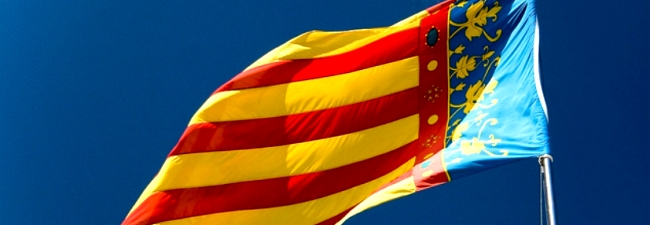
How do they celebrate?
On the 9th of October a lot of events are held in Valencia. There are lots of shows and last year one of them started the day before at midnight. Every year there is a procession through the city with the mayor, cabinet, clergies and a part of the army. They take the “senyara” with them. This is the original Valencian flag, worn by King Jaime. Normally this flag is in the city hall, kept as a relic… Next stop is the Cathedral. After that the procession stops at the statue of King Jaime and people leave flowers there. King Jaime was the man that conquered the city after the ruling of the Arabs. After this conquer, the city of Valencia was founded. The procession ends at Plaza Ayuntamiento where the mascletas end the event.
Program 2019
Since we don’t know the program of 2019 yet, you’ll find the program of 2018 below so you can get an idea of how this holiday will be celebrated.
8 October 2018
18.00 hour Free concert at Plaza de la Virgen
19.00 hour Traditional dans & music at Plaza Ayuntamiento
19.30 hour Concert in Palau de la Música played by the orchestra of Valencia
0.00 hour Firework show in the Turía park between Puente “bridge” de la Exposición and Puente de las Flores.
9 October 2018
12.00h The hanging of the Valencian Flag at the municipality on Plaza del Ayuntamiento. After this, the procession will start:
They will walk from Plaza del Ayuntamiento through San Vicente Martir to Plaza de la Reina. The procession will continue at Puerto de los Hierros, “Iron gate” of the Cathedral and will go to the other entrance of the Cathedral, at Plaza de la Almoina. Thereafter the procession will continue to calle Barchilla, Plaza de la Reina and from calle de la Paz to el Parterre. At the statue of King Jaime I (at Plaza de Alfonso el Magnanimo) people will leave flowers. Afterwards the procession will continue and they go along the streets calle Pintor Sorolla and calle de las Barcas, they will end on Plaza del Ayuntamiento. To mark the end of the procession, they set off a mascleta (loud fireworks with a lot of blasts and booms).
16.00h There will be two performances on the Plaza de la Virgin (behind the Cathedral). Firstly there will be a performance from “Dansá Popular”, this performance includes a lot of dancing! Thereafter there will be a performance from Festival van Balls, Música i Cançons Valencianes (typical Valencian dance and music)
17.00h Día de la Comunidad Valenciana ends with the arrival of the Moors and Christians who walk through the city in typical costumes and full of color. This route follows:
It starts at Glorieta Paz, calle de la Paz, afterwards through Calle San Vicente Martir to Plaza Ayuntamiento and ends at calle Marqués de Sotelo.
Fireworks
People in Valencia love their fireworks. This becomes clear at Día de la Comunidad Valencia. After the procession the firework begins at Plaza Ayuntamiento with a mascleta. This is very loud fireworks with a lot of blasts and booms which you may know from Las Fallas. After the fireworks there are many shows full of music and colour. The night before Día de la Comunidad Valenciana, at 8 October, there is also firework. You can see the ornamental fireworks from each square.
Mocaorà
Día de la Comunidad Valenciana isn’t the only celebration on 9 October. The feast of San Dionisio will also be celebrated that day. This is the Saint of lovers. On this day men have to give a small scarf with marzipan to their lovers. This tradition is called Mocaorà, from Mocadorà that means scarf. This tradition is from way back in Spanish history. The marzipan stands for the fertility of Valencia. Men have to do this each year. Women keep these scarves to show the length of love between her and her man. Mocaorà is similar to Valentine’s Day.


